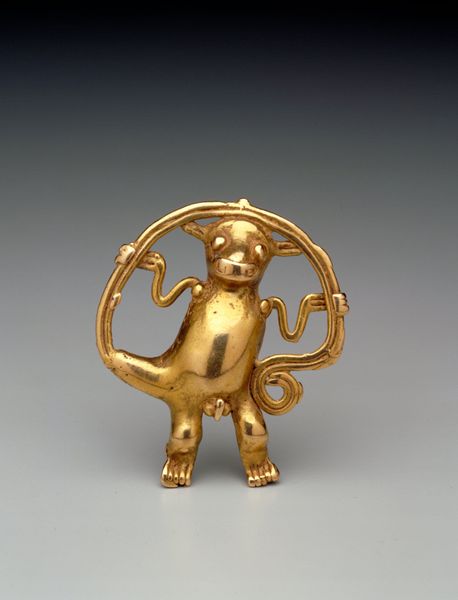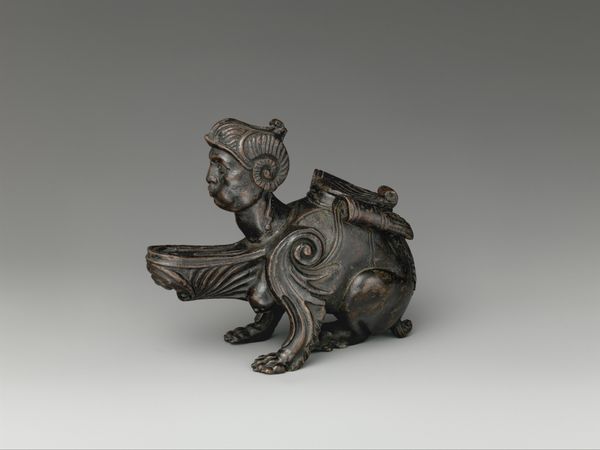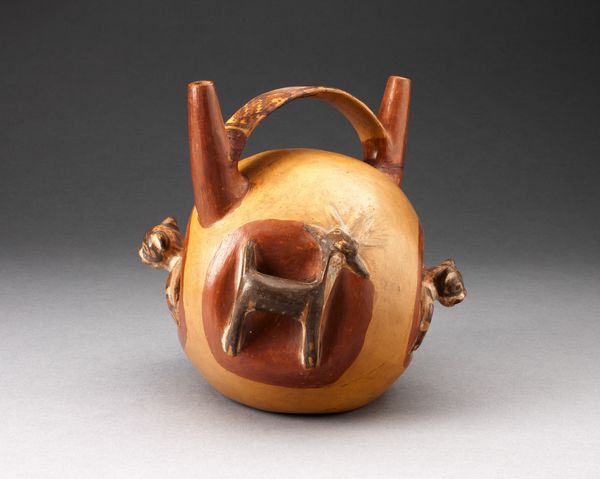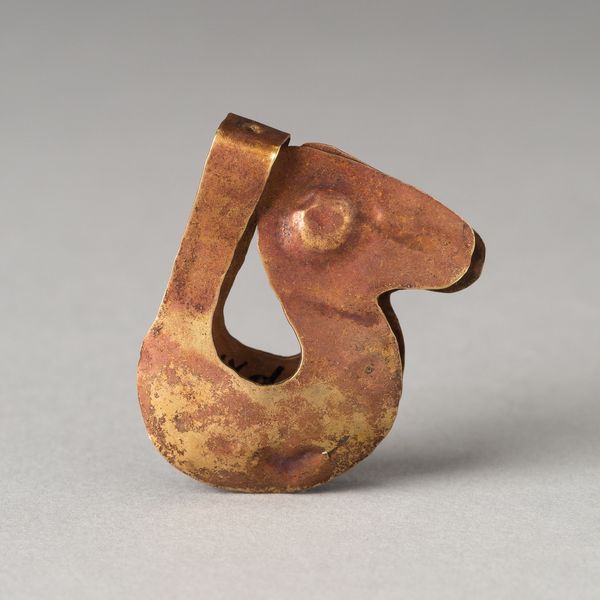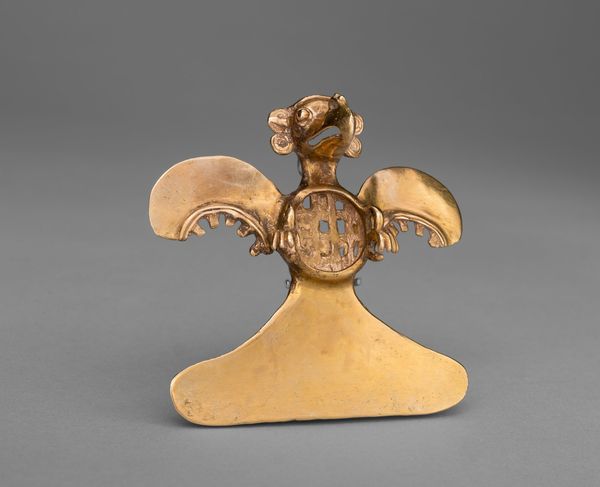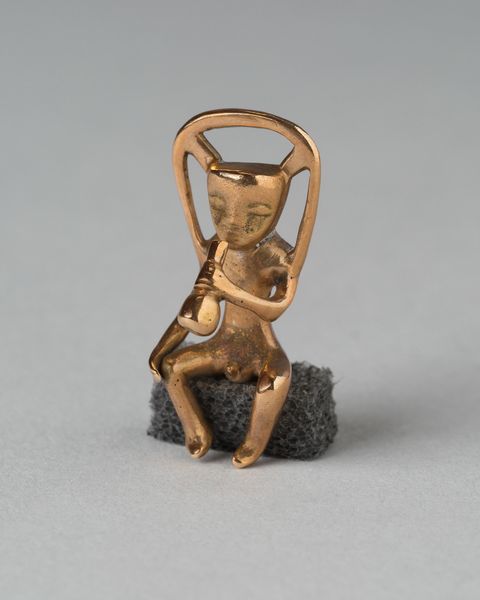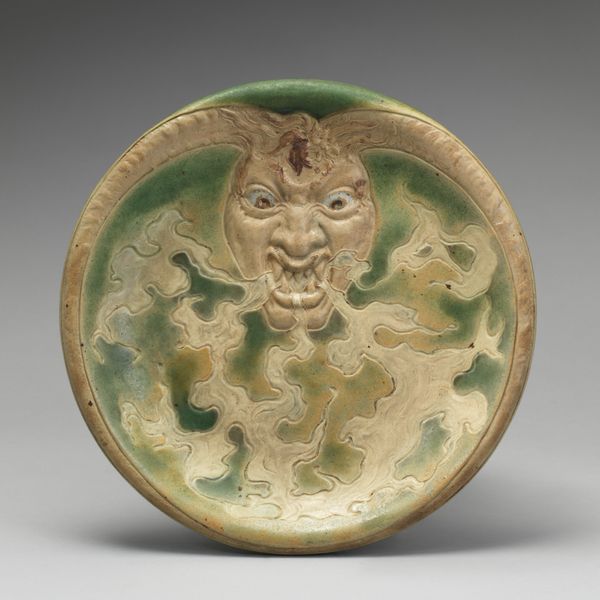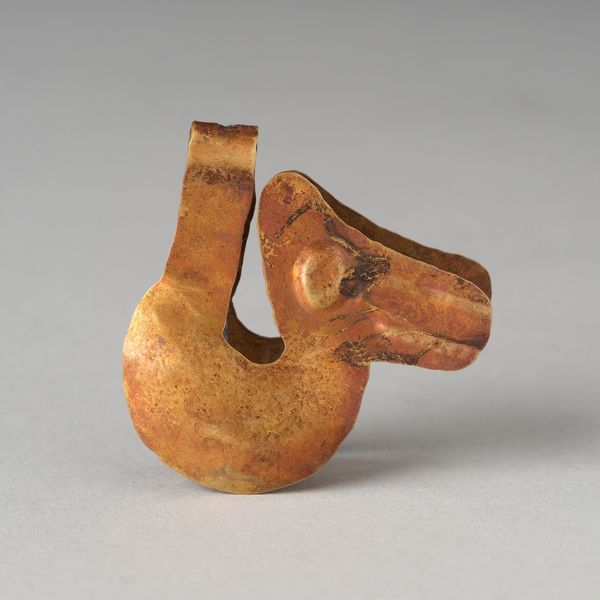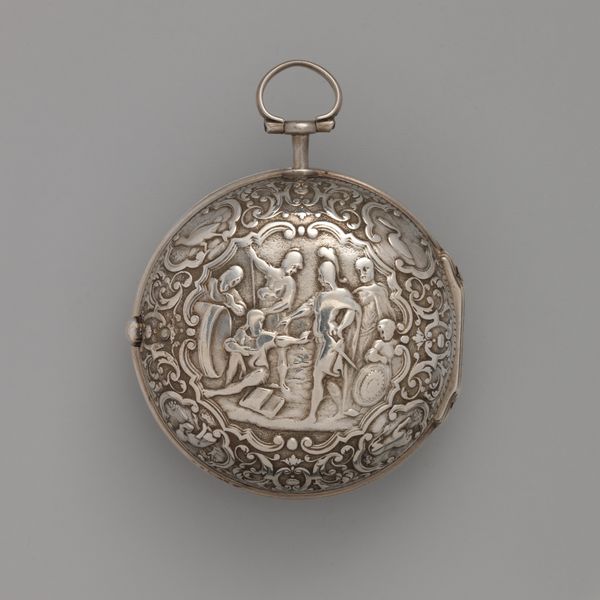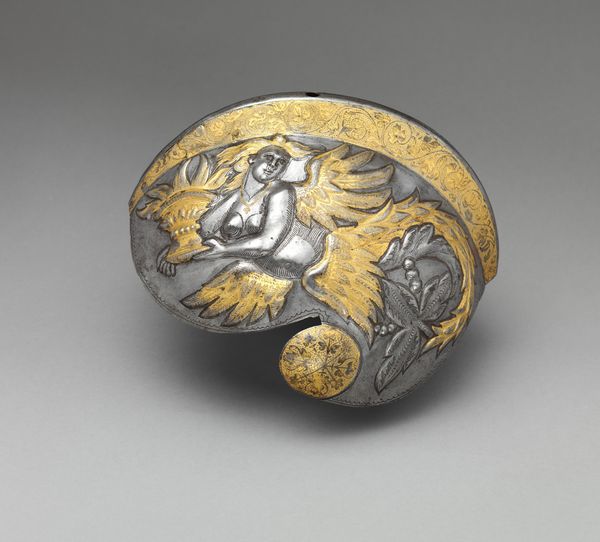
Circular Tweezers with Two Felines Incised on Surface c. 1000 - 1400
0:00
0:00
metal, relief, bronze, sculpture
#
metal
#
relief
#
bronze
#
figuration
#
sculpture
#
indigenous-americas
Dimensions: 6 × 5.6 cm (2 3/8 × 2 3/16 in.)
Copyright: Public Domain
Editor: This is “Circular Tweezers with Two Felines Incised on Surface,” created by the Chimú culture sometime between 1000 and 1400. It's made of metal, and currently resides at the Art Institute of Chicago. I find the choice of imagery fascinating for a tool—two cats! What strikes you most about this object? Curator: It's a perfect example of blurring the lines between utilitarian object and artwork, isn’t it? Looking at the materiality – the bronze alloy, likely produced through lost-wax casting – forces us to consider the labor involved. Mining the ore, smelting, the skilled craftsmanship… these processes embedded value into the object beyond its function. Were these tweezers used for everyday grooming, or did their precious metal and feline decoration signal something about the owner's status or role in society? Editor: So, it's not just about plucking hairs! The material itself becomes part of the story. How does the social context connect with the creation of the object? Curator: Exactly! Think about Chimú society, highly stratified, with elaborate systems of tribute and control over resources. This little object speaks volumes. The relief carving of felines, perhaps related to power or spiritual beliefs, further elevates it. How was access to metal production and craftmanship distributed within Chimú society? Who had the right to use this object and display this imagery? What materials were available in that area? Editor: That gives me a lot to think about. I guess what I initially saw as a simple tool becomes a lens through which to view the entire culture. The process reveals so much! Curator: Precisely! By focusing on the materials and making of the piece, we unpack narratives of labor, power, and belief systems woven into its very being. It transcends function, doesn’t it? Editor: Absolutely. Thanks, I’ll never look at tweezers the same way again!
Comments
No comments
Be the first to comment and join the conversation on the ultimate creative platform.

